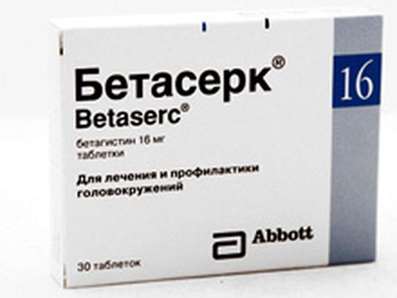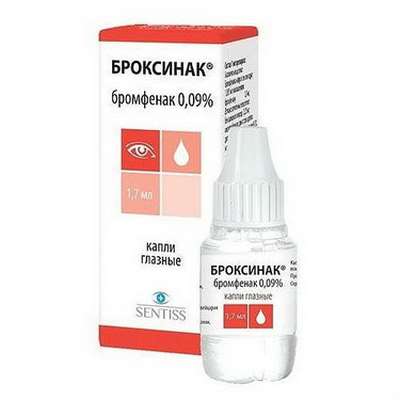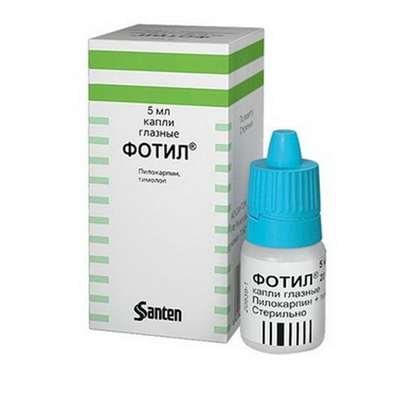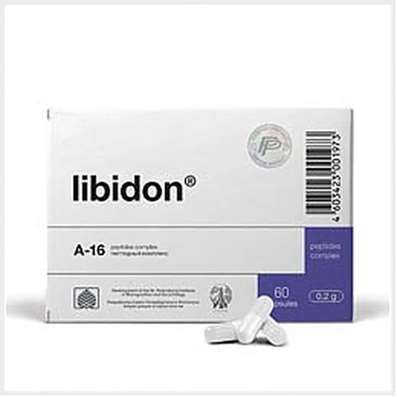Instruction for use: Azelastine+Fluticasone (Azelastinum+Fluticasonum)
I want this, give me price
Pharmacological group
H1-antihistamines in combination
Glucocorticosteroids in combinations
Nosological classification (ICD-10)
H10.1 Acute atopic conjunctivitis
Allergic conjunctivitis, Allergic eye disease, Allergic conjunctivitis, Allergic conjunctivitis is caused by chemical and physical factors, Allergic rhinoconjunctivitis,Allergic inflammation of the eye, Spring catarrh, Spring keratitis, Spring conjunctivitis, allergic Conjunctivitis, Perennial allergic conjunctivitis,Exacerbation of pollen allergy in the form of Syndrome rinokonyunktivalnogo, Acute allergic keratoconjunctivitis, Acute allergic conjunctivitis,Superficial bacterial eye infections,rhinoconjunctivitis, Seasonal allergic conjunctivitis, Seasonal conjunctivitis, Sennoz, Chronic allergic keratoconjunctivitis, Chronic allergic conjunctivitis
J30 Vasomotor and allergic rhinitis
Allergic rinopatiya, Allergic rhinosinusopathy, Allergic respiratory diseases, Allergic rhinitis, nasal allergy, Seasonal Allergic Rhinitis, Vasomotor rhinitis, Long-allergic rhinitis, Perennial allergic rhinitis, Perennial allergic rhinitis, Year-round or seasonal allergic rhinitis, Year-round allergic rhinitis nature, Rhinitis allergic vasomotor, Exacerbation of pollen allergy in the form of Syndrome rinokonyunktivalnogo, Acute allergic rhinitis, Edema of the nasal mucosa, Edema of the nasal mucosa, Swelling of the mucosa of the nasal cavity, Swelling of the nasal mucosa, Swelling of the nasal mucosa, pollen disease, Permanent allergic rhinitis, rhinoconjunctivitis, rhinosinusitis,rhinosinusopathy, Seasonal allergic rhinitis, Seasonal Allergic Rhinitis, Haymarket rhinitis, Chronic allergic rhinitis, Allergic respiratory diseases
Pharmacology
Pharmacological action - anti-inflammatory, antiallergic, glucocorticoid, H1-antihistamine.
Pharmacodynamics
The combination of azelastine + fluticasone contains azelastine (in the form of hydrochloride) and fluticasone (in the form of propionate), which have a different mechanism of action and show synergy with regard to alleviating the symptoms of allergic rhinitis and rhinoconjunctivitis.
Fluticasone propionate is a synthetic trifluorinated GCS (glucocorticosteroids), which has a high affinity for glucocorticoid receptors, exhibits a powerful anti-inflammatory effect, which is 3-5 times that of dexamethasone.
Azelastine hydrochloride, a derivative of phthalazinone, is known as an antiallergic long-acting compound that is an selective blocker of H1-histamine receptors, stabilizes mast cells and has anti-inflammatory properties. In vivo studies (either a process or a living reaction) and in vitro show that azelastine inhibits the synthesis and / or release of chemical mediators that are involved in the early and late stages of allergic reactions, such as LT (leukotrienes), histamine, FAT (factor , Activating platelets) and serotonin. Azelastine with intranasal application is characterized by a rapid onset of action compared with oral administration of antihistamine drugs (drug) and GCS (glucocorticosteroids). Relief of nasal allergic symptoms is observed as early as 15 minutes after administration.
In comparison with placebo and separately applied azelastine hydrochloride and fluticasone propionate, the combination of azelastine + fluticasone 2 times a day significantly alleviates nasal symptoms (including rhinorrhea, nasal congestion, sneezing and itching in the nose). There is also a significant relief of eye symptoms, such as itching, lacrimation and redness of the eyes.
In comparison with fluticasone propionate in the form of monotherapy, relief of the main symptoms (a 50% reduction in the severity of symptoms) was achieved with azelastine + fluticasone combination significantly faster (for 3 days or more).
Pharmacokinetics
Suction. After intranasal administration of fluticasone propionate (200 μg / day), C max was 0.017 ng / ml. Absorption from the mucosa of the nasal cavity is negligible due to the low solubility of fluticasone in water, and most of the dose is probably swallowed. When administered orally, less than 1% of the administered dose is absorbed, which is due to slow absorption and active metabolism immediately after ingestion. Thus, the total systemic absorption, which is a combination of absorption from the mucous membrane of the nasal cavity and when swallowed, is insignificant.
After repeated administration of a daily dose of 0.56 mg of azelastine hydrochloride (corresponding to the administration of a single dose in each nasal passage 2 times a day), Cmax in plasma was 0.027 ng / ml in healthy volunteers. The level of active metabolite N-desmethylazelastine was at the level of the lower detection threshold or lower (0.12 ng / ml).
In patients with allergic rhinitis after the administration of a daily dose of 0.56 mg of azelastine hydrochloride, the azelastine concentration in the plasma 2 hours after the administration was about 0.65 ng / ml. Doubling the daily dose to 0.12 mg led to an increase in the concentration of azelastine in the blood plasma to 1.09 ng / ml, which indicates a proportional increase in concentration depending on the dose.
Distribution. Fluticasone propionate has a large Vss (approximately 318 L). The binding with plasma proteins is 91%. Vd azelastine indicates a preferential distribution in peripheral tissues. The level of binding to plasma proteins is 80-90%. Both substances have a wide therapeutic window.
Metabolism. Fluticasone propionate is rapidly excreted from the systemic bloodstream, mainly through metabolism in the liver with the formation of an inactive metabolite - carboxylic acid - through the isoenzyme CYP3A4 (cytochrome P450 isoenzyme) cytochrome P450. Metabolism of the swallowed fraction of fluticasone propionate during the first passage through the liver occurs in the same way. Caution should be exercised when strong inhibitors of CYP3A4 (cytochrome P450 isoenzyme), such as ketoconazole and ritonavir, are simultaneously administered, There is the possibility of increasing the concentration of fluticasone propionate in the blood.
Azelastine is metabolized to N-desmethylazelastine by various isoenzymes of the liver, mainly CYP3A4 (cytochrome P450 isoenzyme), CYP2D6 (cytochrome P450 isoenzyme), and CYP2C19 (cytochrome P450 isoenzyme).
Excretion. The elimination of fluticasone propionate is linear in the dose range from 250 to 1000 μg and is characterized by a high plasma clearance (1.1 l / min). Cmax (maximum concentration) in blood plasma is reduced by approximately 98% within 3-4 hours, and only at very low concentrations in the plasma there is a final T1 / 2 (half-life) - 7.8 hours. The renal clearance of fluticasone propionate is negligible (less than 0.2%), and the inactive metabolite - carboxylic acid - is less than 5%. Fluticasone propionate and its metabolites are mainly excreted with bile through the intestine.
After a single application of T1 / 2 (half-life), azelastine from the blood plasma is approximately 20-25 hours and about 45 hours for its therapeutically active metabolite N-desmethylazelastine. Excretion occurs mainly through the intestine. Prolonged excretion of small amounts through the intestine testifies to the possibility of the existence of intestinal-hepatic circulation.
Indications
Allergic rhinitis / rhinoconjunctivitis of moderate and severe degree (symptomatic treatment).
Contraindications
Hypersensitivity to the active ingredients of the combination; Children under 12 years.
pregnancy and lactation
Data on the use of azelastine hydrochloride and fluticasone propionate in pregnant women are absent or limited. Thus, the combination of azelastine + fluticasone can be used during pregnancy only if the expected benefit exceeds the possible risk.
It is not known whether the intranasal administration of azelastine hydrochloride or its metabolites and fluticasone propionate or its metabolites into breast milk penetrates, therefore a combination of azelastine + fluticasone should be given to lactating women only if the expected benefit exceeds the possible risk to the child.
Fertility. Studies of the effect of azelastin + fluticasone on fertility have not been conducted.
The effect of azelastine hydrochloride on the fertility of male and female rats was not observed when administered orally at doses up to 30 mg / kg (approximately 530 times the maximum recommended daily dose for an adult). With the administration of drugs at a dose of 68.6 mg / kg, an increase in the duration of the estrous cycle was noted with a decrease in the copulatory activity of animals and a decrease in the number of pregnancies. The number of yellow bodies in the ovaries and implantations decreased, but without increasing the level of pre-implantation losses.
In studies on the reproductive toxicity of fluticasone propionate, conducted in male and female rats with SC administration at doses up to 50 μg / kg (approximately 2 times the recommended daily dose for an adult), no effect on the fertility of the animals was recorded. With n / to the introduction in a dose of 50 mcg / kg, a significant reduction in the mass of the prostate gland was recorded.
Side effects
The incidence of side effects is determined as follows: very often (≥1 / 10); Often (≥1 / 100, <1/10); Infrequently (≥1 / 1000, <1/100); Rarely (≥1 / 10000, <1/1000); Very rarely (<1/10000).
From the immune system: very rarely - hypersensitivity reactions, including anaphylactic reactions, angioedema, bronchospasm.
From the nervous system: often - headache; Very rarely - dizziness, drowsiness, lethargy.
From the senses: often - dysgeusia (distortion of taste), usually due to improper application, namely excessive tilt of the head back; Very rarely - glaucoma, an increase in IOP, cataracts.
On the part of the respiratory system, chest and mediastinum: infrequently - nosebleeds, nasal discomfort (burning, itching), sneezing, dryness of the nasal mucosa, coughing, dryness in the throat, irritation of the throat; Very rarely - perforation of the nasal septum, erosion of the mucous membrane of the nasal cavity, unpleasant odor.
From the digestive tract (gastrointestinal tract): rarely - dry mouth; Very rarely - nausea.
From the skin and subcutaneous tissue: very rarely - rash, itching, urticaria.
General disorders and disorders at the injection site: very rarely - fatigue, fatigue.
With intranasal application of GCS, systemic side effects may develop, especially with prolonged use in high doses (see "Precautions"). These effects are much less pronounced than with oral administration of GCS. Possible systemic side effects may include Itenko-Cushing syndrome, suppression of adrenal function, growth retardation in children, development of osteoporosis with prolonged use.
Interaction
Fluticasone
The effect of other drugs (drug) on fluticasone propionate. Caution should be given to fluticasone propionate in patients who simultaneously take drugs that are potent inhibitors of the CYP3A4 isoenzyme (eg, protease inhibitors such as ritonavir). When investigating the interaction in healthy volunteers against the background of intranasal administration of fluticasone propionate, the administration of 100 mg of ritonavir 2 times a day resulted in an increase in the concentration of fluticasone propionate in the blood plasma several hundred times, as a result of which the level of hydrocortisone in the serum significantly decreased. Post-registration use reported cases of clinically significant interactions in patients receiving fluticasone propionate and ritonavir leading to systemic effects, including Itenko-Cushing syndrome and suppression of adrenal function. Simultaneous reception of drug data should be avoided, unless the potential benefit to the patient exceeds the possible risk of systemic side effects of glucocorticosteroids (glucocorticosteroids) (see "Precautions").
Erythromycin causes negligible, and ketoconazole - a slight increase in the concentration of fluticasone propionate in the blood plasma, which does not entail any significant decrease in the concentration of serum cortisol. Nevertheless, caution should be exercised when combining cytochrome CYP3A4 isoenzyme inhibitors (eg ketoconazole) and fluticasone propionate in view of a possible increase in plasma concentration of the latter.
Azelastine
Special studies to study the interaction with other drugs with intranasal use of azelastine hydrochloride were not carried out. Studies have been conducted on the interaction of azelastine when ingested at high doses with other drugs, but the results of these studies can not be transferred to intranasal application.
In some cases, alcohol and sedative drugs may increase fatigue, dizziness, or weakness when combined with azelastin + fluticasone.
Overdose
With an intranasal route of administration, an overdose is unlikely.
There is no evidence of an acute and chronic overdose of fluticasone propionate.
Symptoms: Intranasal administration of 2 mg fluticasone propionate (10 recommended daily doses) 2 times a day for 7 days in healthy volunteers did not have an effect on the hypothalamic-pituitary-adrenal system. The use of combination azelastine + fluticasone in doses exceeding recommended for a long period of time, can lead to a temporary suppression of the function of the adrenal glands. In this case, treatment should continue with the use of minimal doses sufficient to control the symptoms.
In the case of an overdose due to accidental oral administration, there may be abnormalities from the nervous system (including drowsiness, confusion, coma, tachycardia or hypotension) caused by azelastine hydrochloride.
Treatment: symptomatic. Depending on the amount swallowed, gastric lavage is recommended. There is no known antidote.
Routes of administration
Intranasally.
Precautions
Possible manifestations of systemic action of nasal SCS, especially with the appointment of high doses and long-term treatment. The possibility of these phenomena is much lower than with oral administration of GCS, and they can vary in individual patients and between different SCSs. Possible manifestations of systemic action may include the Itzenko-Cushing syndrome, characteristic signs of the cushingoid, oppression of adrenal function, growth retardation in children and adolescents, cataracts, glaucoma, and significantly less - changes in mental state and behavior, which is manifested by psychomotor hyperactivity, sleep disorders, anxiety, depression Or aggression (especially in children).
It is necessary to monitor patients receiving a combination of azelastine + fluticasone for a long time. When revealing cases of growth retardation, it is necessary to reduce the intranasal SCS dose to the lowest, which allows to effectively control the symptoms. In addition, you should refer the patient to a consultation with the pediatrician. Patients with visual impairment or increased IOP, glaucoma and / or cataract in a history should be under constant supervision.
If there is any suspicion of adrenal insufficiency, transfer of patients from systemic treatment of GCS to the intranasal use of azelastine + fluticasone combination should be carried out with caution.
The use of glucocorticosteroids in doses higher than those recommended may lead to clinically significant suppression of adrenal function, and if it is known that high doses of GCS were used, consideration should be given to the possibility of additional use of systemic SCS during periods of stress or planned surgical intervention.
In patients with tuberculosis, any untreated infection or a recent surgery or injury to the nose and mouth, the expected benefit from the appointment of a combination of azelastine + fluticasone with possible risks should be compared.
Infections of the nasal cavity or paranasal sinuses require appropriate treatment, but are not a contraindication to the use of azelastine + fluticasone combination.
Ritonavir
Post-registration use reported cases of clinically significant interactions in patients receiving fluticasone propionate and ritonavir leading to systemic effects, including Itenko-Cushing syndrome and suppression of adrenal function. Simultaneous reception of drug data should be avoided, unless the potential benefit to the patient exceeds the possible risk of systemic side effects of GCS.
Influence on the ability to drive vehicles, work with mechanisms. In some cases, when using a combination of azelastine + fluticasone, there may be disorders from the nervous system - headache, dizziness, drowsiness, lethargy. When such undesirable phenomena appear, one should refrain from driving and working with machinery.

 Cart
Cart





